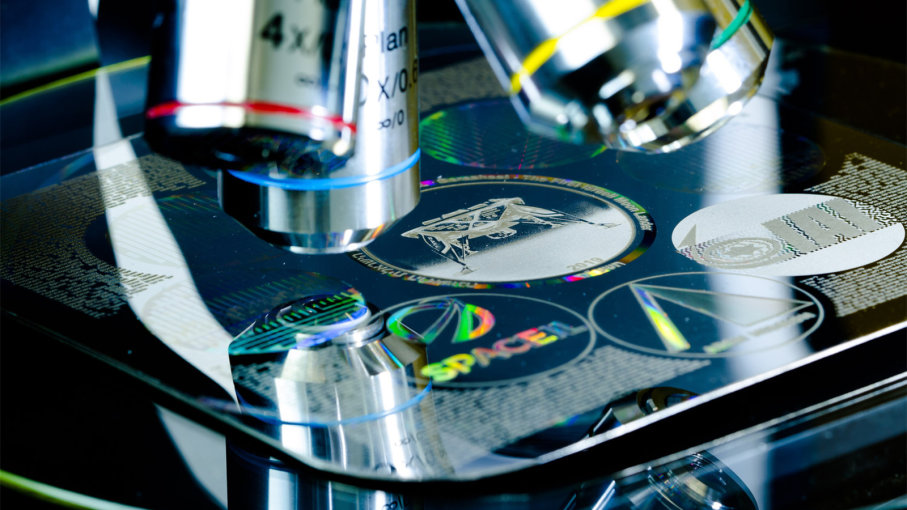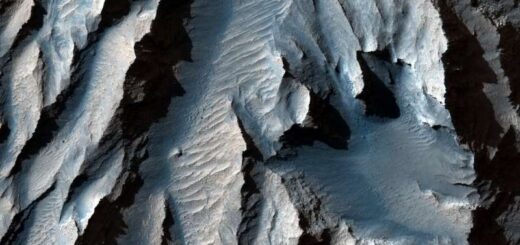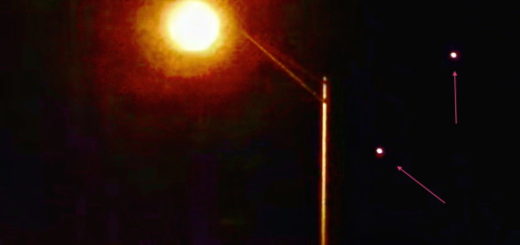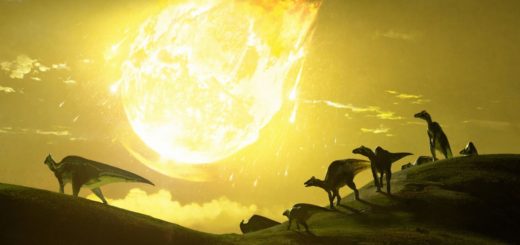The Lunar Library: A Backup of Human Knowledge Is Going to the Moon

Rest easy, because much of the entirety of human knowledge has been backed up, and is on its way to the moon on an Israeli spacecraft called the SpaceIL “Beresheet” lunar lander. It will be among the solar system’s first off-Earth libraries, and the only technology the aliens or post-apocalypse humans will need to access the data will be a rudimentary microscope — something we’ve had knocking around our planet since the 1700s.
That’s cool, but do we need an Earth library on the moon? The answer is, nobody knows, but it’s not a bad idea.
Nobody likes to think about what the apocalypse might be like or when it could come, but there’s a non-profit organization that’s thinking about that so you don’t have to. The Los Angeles-based Arch Mission Foundation exists solely to produce and disseminate backups of humanity’s most important knowledge, both on Earth and around the solar system. The project started as a childhood dream of co-founder Nova Spivack, who was inspired by Issac Asimov’s “Foundation” novel series about a group of scientists who get wind of the collapse of civilization and work furiously against time and assorted intergalactic warlords to protect the collected works of humanity — and perhaps even humanity itself — before everything goes to pot.
Determining whether or not our civilization is on the way out is not the job of the Arch Mission Foundation, but according to some anthropologists and historians, the average lifespan of a regular old civilization is about 336 years. Often a civilization’s demise is partly self-inflicted, and partly the product of outside pressures like climate change and environmental degradation, bureaucracy, social inequality and war.
What the Arch Mission Foundation wants to do is create an archive of what humanity has worked out over the past 5,000 years or so, and disperse these information caches all over the solar system and even in cave systems, on mountaintops and in underwater locations here on Earth so they can be retrieved later. In addition to the library headed to the moon (it’s scheduled to touch down on April 11, 2019), there is another already in the glove compartment of the SpaceX Tesla Roadster that has been in orbit around the sun since February 2018. It’ll just keep doing that indefinitely — in case anybody needs a compendium of human knowledge, that’s one place to look.
But just how did the Arch Mission Foundation decide what information to include in the Lunar Library and the other information-caching missions?
“The Lunar Library contains a comprehensive back up of humanity’s most important knowledge,” says Matt Hoerl, the production director for the Arch Mission Foundation. “We try to curate other curated data sets that represent a broad and inclusive range of perspectives, experiences, ethnicities, nations, traditions and cultures in order to accurately reflect the entire scope of human diversity. No matter what we do, it is never going to be possible to satisfy every different group completely, so the only solution is to have so much storage space that curation really is not necessary. In the not-so-distant future, there will be enough space on the Arch Libraries for virtually everything that anyone wants to include.”
What the Arch Mission Foundation’s team of scholars and scientists have deemed to be humanity’s most important knowledge come in the form of open data sets from the Wikimedia foundation, The Long Now Foundation, Project Gutenberg, and the Internet Archive, as well as many other data sets contributed by individuals and organizations. Basically, it’s the proverbial kitchen sink of information crammed into 25 DVD-sized disks made of pure nickel, each only 40 microns thick.
Storing information in space is actually pretty tricky — especially if you want it to last billions of years. The Lunar Library, for instance, will not only have to withstand space radiation, but also the extreme heat and cold of the moon’s surface. Because pure nickel doesn’t decay and has no half life, it’s basically indestructible, even in space. The top four disks in the Library have more than 60,000 extremely tiny images etched into them — photos and pages of books in a format called Nanofiche, so whoever finds them will only need a magnifying device in order to peruse the data.
The deeper layers of the library require a computer to retrieve the information, which tells us a little bit about the intended audience of the Arch Mission Foundation’s work — they’re doing this for future humans, not the aliens.
“Our hope is to provide an accurate picture of our past to beings in the distant future, and to do that we have to transmit not only our successes and triumphs, but also our mistakes and things we have come to regret,” says Hoerl. “We do not want to see any history erased.”



 Creators of mankind
Creators of mankind Description of “Tall white aliens”
Description of “Tall white aliens” Where they came from?
Where they came from? About hostile civilizations
About hostile civilizations The war for the Earth
The war for the Earth “Tall white aliens” about eternal life
“Tall white aliens” about eternal life Video: “Nordic aliens”
Video: “Nordic aliens” Aliens
Aliens Alien encounters
Alien encounters The aliens base
The aliens base UFO
UFO Technology UFO
Technology UFO Underground civilization
Underground civilization Ancient alien artifacts
Ancient alien artifacts Military and UFO
Military and UFO Mysteries and hypotheses
Mysteries and hypotheses Scientific facts
Scientific facts


















